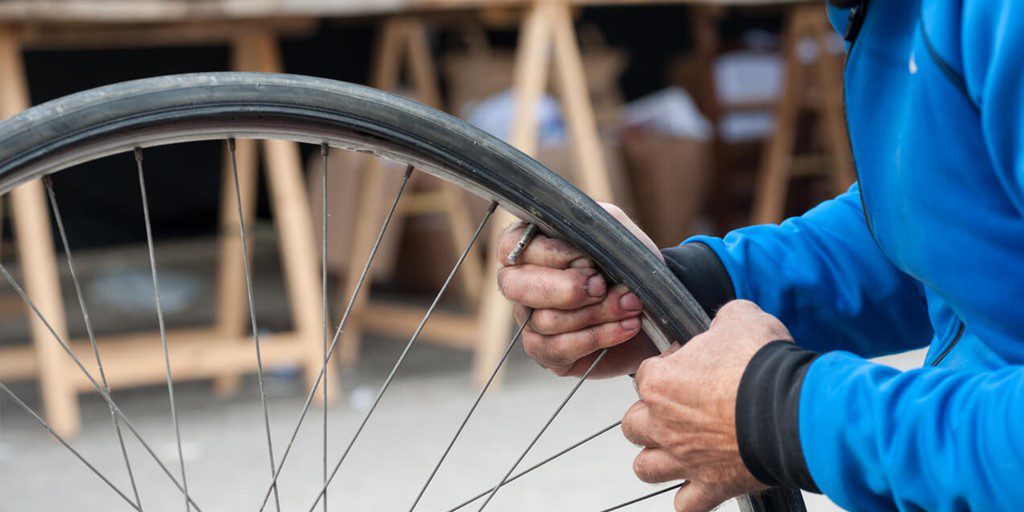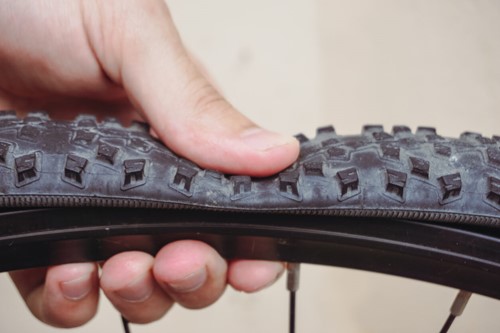How to change a bike inner tube

Knowing how to change a bike inner tube is essential if you’re a regular cyclist.
Why? We’re so glad you asked.
Why do you need to change bike inner tubes?
When you pump air into your bike tyres, you’re actually pumping air into the inner tube. The inner tube sits inside the tyre, holding the cushion of air that keeps you moving.
So, if you suffer a puncture or are in a nasty accident, there’s every chance your inner tube will be damaged, too.
That’s why it pays to take care of your inner tubes and change them when necessary.
How to change a bike inner tube
Before we start, it’s important to mention that not all bikes are the same. The way you change a bike inner tube can vary depending on the bike and its tyres. For the purpose of this article, we’ll assume you have a standard road bike.
What size inner tube do I need?
Inner tubes come in various sizes. The size you need depends on your tyres. The best way to check what size inner tube you need is to check the sidewall on your tyre, as manufacturers will normally print sizes here.
Alternatively, you can check the old inner tube you’re getting rid of.
Related: Inner tube buying guide—common sizes, materials, valve types and more
What tools do you need to change a bike inner tube?
Again, the tools required can vary depending on your bike and tyres. Regardless, it doesn’t require a mass of tools. Generally speaking, you’ll probably only need the following to change your inner tube:
Tyre levers (optional)
An inner tube (obviously)
Bike pump
Pliers
Tools ready? Time to get started. Here’s how to change a bike inner tube.
1. Take the wheel off
Whether the front or back inner tube needs changing, the first step is to take the wheel off. You might find it easier to flip your bike upside down to do this.
Start by undoing the breaks and then the quick release. If you’re taking off the front wheel, you need to unwind the quick release slightly to clear the safety tabs at the bottom of the forks.
If you’re taking off the back wheel, make sure the bike chain is on the smallest sprocket and pull the derailleur back out of the way, so the sprocket doesn’t catch when the wheel drops out.
2. Deflate the inner tube and unseat the tyre

Next, you need to let the air out of the tyre and unseat it from the wheel. If you’ve suffered a particularly bad puncture, the inner tube and tyre might well be deflated already—but if not, locate the valve and loosen it to let out the air.
The two most common inner tube valve types are Presta and Schrader.
Presta valves are the narrower of the two and are found on almost all modern bikes.
Schrader valves are pneumatic, often found on motor vehicles as well as some hybrid, mountain, and kids’ bikes.
Check which valve your inner tube has before deflating it.
Once the inner tube is deflated, use your hands to squeeze the tyre inwards and push the bead into the centre of the rim. Work your way around the whole tyre until it feels baggy all the way round.
Related: Schrader vs Presta—understanding the differences
Using tyre levers
You may find it easier to unseat and remove the tyre from the wheel by using tyre levers.
Sneak both levers underneath the bead about 2cm apart but be careful not to trap the inner tube against the wheel rim, as this can cause a puncture.
With the levers in place, press one down to pull the tyre edge over the rim, then pull the other one down to release more, and so on.
Using tyre levers can be quite complicated, especially if doing so for the first time, so have patience. It’s worth mentioning you could also use pliers for this.
Related: Best tyre levers in 2022
3. Remove the inner tube
You should now be able to push the inner tube valve back through its hole and gently pull out the tube.
At this point, it’s also a good idea to give the tyre itself a thorough inspection to check all is as it should be before inserting a new inner tube. Look out for any damage to or splits in the tyre tread, and check for anything like nails and thorns too.
If you’ve suffered a puncture, whatever caused it may still be stuck somewhere in the wheel. A fresh inner tube deserves a fresh wheel.
4. Insert the new inner tube
Now it’s time to fit the new inner tube.
Before inserting it under the tyre, it’s a good idea to inflate it just enough for it to start taking some shape. This will make it easier to fit and also reduce the risk of pinching.
Get the tyre into position and then push the inner tube valve through the rim before carefully massaging the tube into the tyre all the way round, making sure you’re not twisting or pinching it as it sits, and it’s not bulging out over the rim edge either.
This video is handy for this step.
You can also do this with your tyre levers if you have them.
5. Refit and inflate the wheel
Once the new inner tube has been successfully inserted into the tyre and no bits are poking out over the rim, you can fit the wheel back onto your bike.
This is essentially the reverse of step one—again, you might find it easier to flip your bike upside down to do this.
Once attached again, ensure the tyre is pumped up enough, and you’re ready to ride again.
Knowing how to change a bike inner tube means you can get back on the road in no time after a puncture or accident. But, you may also want to consider specialist cycling insurance for an extra sense of security.
At Cycleplan, we arrange cover for a range of bikes and cycling equipment tailored specifically to your needs. Our policies are designed to protect you and your bike from Personal Accident cover to Public Liability, which covers you should you be deemed liable for accidentally injuring someone or damaging property while out cycling.
We’ll also cover you for theft, loss, and accidental damage up to £30,000.
Click here to learn more about how Cycleplan can help you and get a bespoke quote today.
Related
How to clean rust off a bike
The 9 best cycling jerseys for every season
How to stop bike brakes from squeaking (step-by-step)






